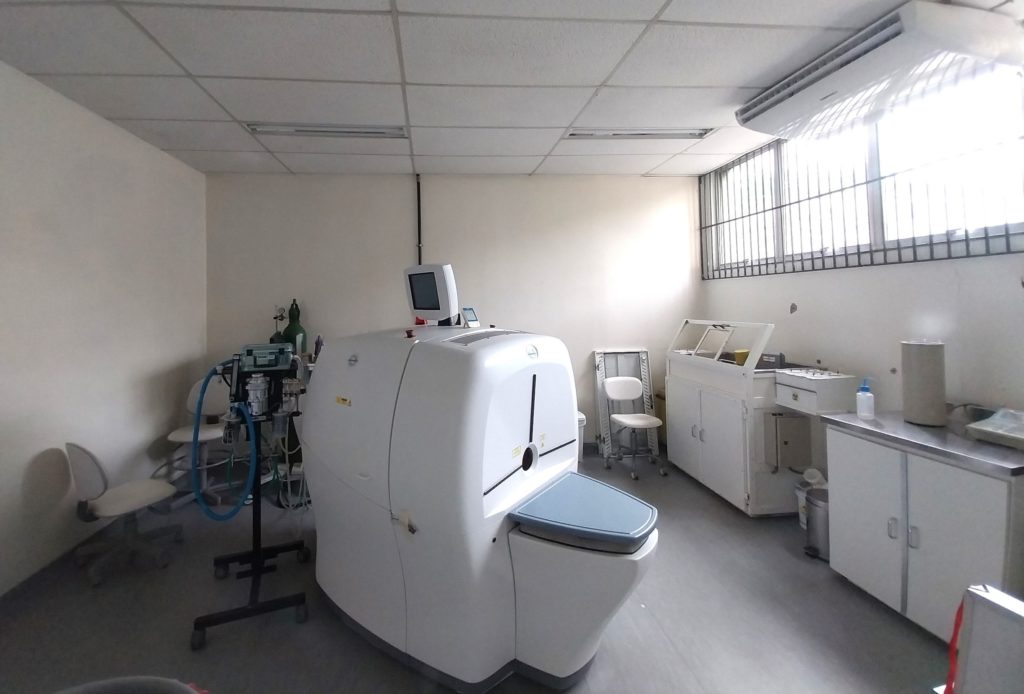
It is capable of generating functional images in three dimensions of organs, systems or even the entire body. The system detects gamma rays indirectly emitted from the emission of a positron from a radionuclide (in the case of PET) or photon (in the case of SPECT) which is injected into the body together with a biologically active molecule. This system makes it possible to combine functional and anatomical images, allowing the visualization of different metabolic processes in high resolution. This equipment (SPECT/PET/CT) allows the performance of nuclear imaging exams with isotopes emitting gamma rays, such as Iodine123, Iodine131, Technetium99m and Gallium-citrate68, as well as with radioisotopes emitting positrons, such as carbon ( C-11), nitrogen (N-13), oxygen (O-15) and fluorine (F-18). These characteristics make it possible to mark several molecules that participate in key metabolic processes, such as dopamine, glucose and amino acids, among others.




